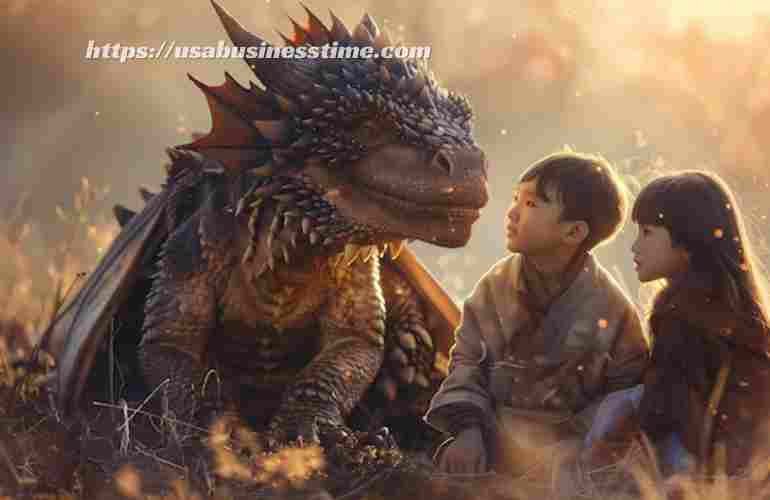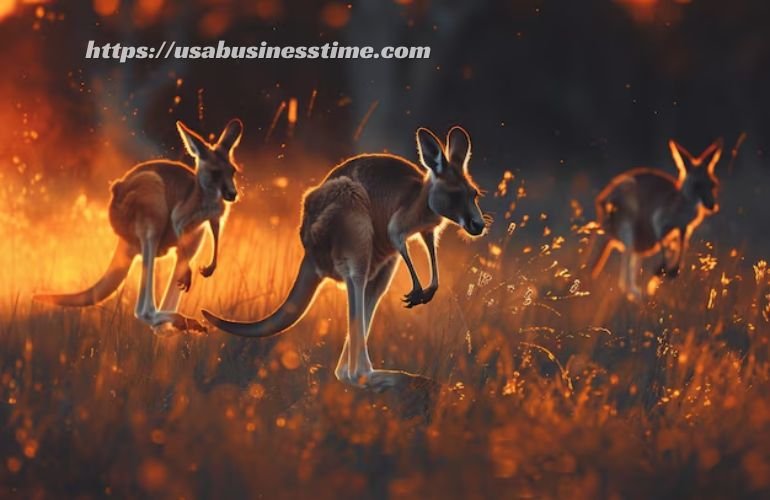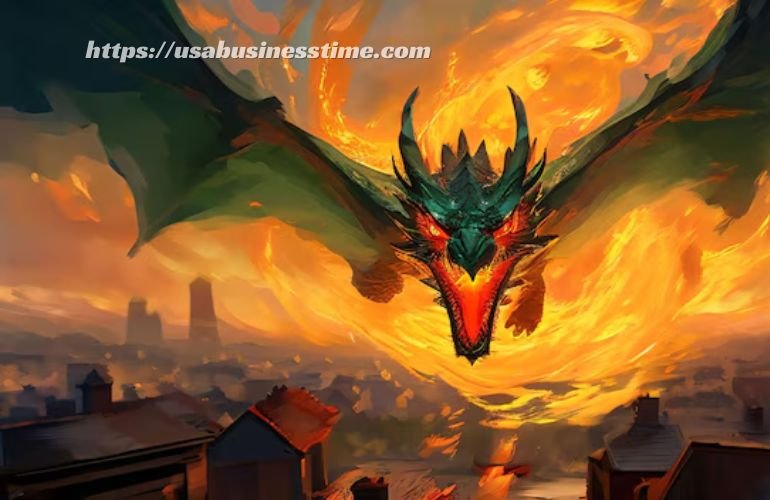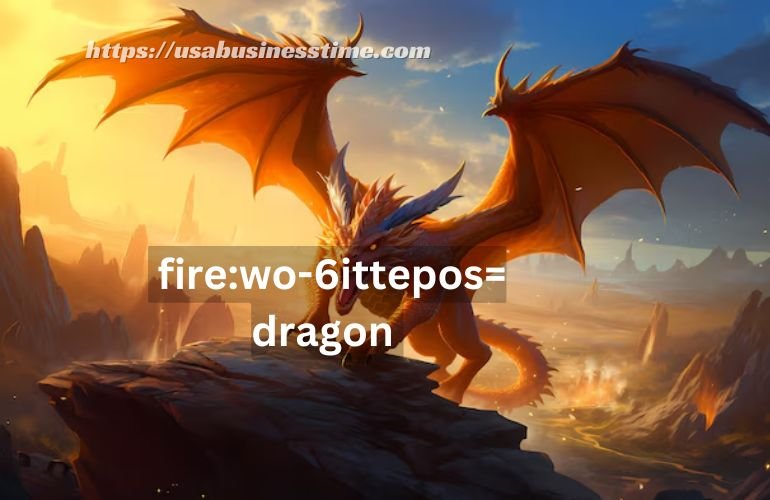The idea of fire dragons has captivated human imagination for centuries. These legendary creatures, often depicted with fiery breath and immense power, appear in stories and art from cultures around the world. Fire dragons are more than just mythical beings; they embody strength, wisdom, and sometimes, destruction. Tracing their roots reveals not only fascinating folklore but also deep cultural symbolism that resonates with people today. As fire dragons continue to influence modern media and design, understanding their origins and symbolism brings these timeless legends into a new light.
Table of Contents
The Origins of Fire Dragons: Legends and Ancient Beliefs
The origin of fire dragons is woven into ancient myths and stories from cultures around the world. In early civilizations, dragons often represented both power and mystery, symbolizing forces that humans couldn’t fully understand. In China, fire dragons were seen as potent symbols of strength and good fortune, guardians of the natural elements, and associated with seasonal rains, crops, and even imperial authority. Unlike their Western counterparts, Chinese dragons weren’t creatures to be feared but revered as celestial beings with wisdom and protective qualities.
In contrast, European dragon legends cast them in a more menacing light. Medieval stories often depicted dragons as fire-breathing monsters lurking in dark caves, guarding treasures, and challenging brave knights. These fire-breathing creatures symbolized chaos, destruction, and obstacles to be overcome. The legendary tales of dragons such as Fafnir in Norse mythology or the dragons fought by saints like St. George shaped the fierce, fiery dragon figure that dominates Western imagery today.
In Hindu and Buddhist mythology, dragons took on another layer of meaning, embodying both the physical and spiritual realms. They were seen as serpentine creatures with the ability to harness the elements, including fire, and sometimes connected to the idea of rebirth and cyclical destruction and creation.

These diverse stories and beliefs laid the foundation for how fire dragons are seen today, with each culture attributing unique characteristics and values to these mythical beings. From protectors to destroyers, fire dragons symbolize a spectrum of qualities that reflect humanity’s complex relationship with nature, power, and mystery.
Symbolism of Fire Dragons: Power, Wisdom, and Destruction
Fire dragons carry potent symbolism, with their fiery breath and immense power representing elements that are both awe-inspiring and dangerous. These creatures often embody the raw force of nature, wielding fire as both a source of creation and destruction. In many myths, the dragon’s fire symbolizes transformative power, echoing how fire in human history has been essential for warmth, cooking, and survival but can also bring devastation. This dual nature of fire makes dragons complex figures that evoke both respect and fear.
In Eastern cultures, fire dragons are closely associated with wisdom and protection. In Chinese culture, they are seen as bearers of good fortune, guiding rains and symbolizing growth. Their wisdom is often likened to the knowledge of elders or ancestral spirits, and they are celebrated as protectors against evil forces. The image of a dragon reigning over water and fire in balance represents harmony between opposites and the wisdom needed to maintain it.
In Western lore, the symbolism shifts toward the destructive side of fire, with dragons often seen as obstacles for heroes to overcome. Dragons in European tales are symbols of chaos and aggression, guardians of hidden wealth, and embodiments of challenges that test courage. The hero’s battle with a dragon often represents a personal or societal struggle against darkness, with the dragon’s fire standing in for fears, trials, and inner battles that must be conquered.
Beyond these cultural interpretations, the fire dragon also holds a universal symbolism of inner strength and transformation. The image of a dragon with flames represents resilience, as it withstands the heat of its own power. For those who draw inspiration from dragons, they represent the ability to harness one’s inner fire to achieve growth, overcome obstacles, or pursue wisdom.
Overall, fire dragons are symbols of power in its many forms—strength, knowledge, transformation, and sometimes destruction. They represent the balance between creation and chaos, serving as reminders of both the potential and peril of power.
Fire Dragons Across Cultures: Eastern vs. Western Perspectives
Fire dragons appear in the myths and legends of many cultures, each viewing these creatures through a unique lens. In Eastern traditions, especially in Chinese culture, dragons are celebrated as symbols of prosperity, protection, and harmony with nature. Fire dragons, in particular, embody warmth, strength, and authority. They are thought to control elements like rain and fire, bringing fertility and abundance to the land. The dragon is also a revered figure in festivals, art, and even the Chinese zodiac, where the dragon sign symbolizes power, wisdom, and luck.
In contrast, Western cultures have often depicted fire dragons as more fearsome and destructive. European mythology is filled with tales of dragons as fire-breathing beasts that represent chaos and threats to civilization. These dragons are typically guardians of treasure or ancient secrets, hoarding their wealth in deep caves and fiercely guarding it from anyone who dares approach. The idea of the hero slaying the dragon to restore peace or reclaim treasure is a recurring theme in Western stories, symbolizing the battle between order and chaos.
The Japanese also have a distinct interpretation of dragons, which differ somewhat from the Chinese and European views. In Japanese culture, dragons are usually water deities connected to rivers, seas, and rainfall. They are less associated with fire but still hold a place of honor as wise, ancient beings with ties to nature. Fire dragons in Japanese culture may appear in certain folklore, but they tend to symbolize forces that must be respected rather than feared or fought.
Indian mythology offers another perspective, where dragon-like figures are found in stories that combine elements of fire, wisdom, and spirituality. Nagas, serpent-like beings found in Hindu and Buddhist myths, are not exactly dragons but share similar traits, such as elemental control and ancient knowledge. While they don’t always breathe fire, they are linked to powerful forces of nature and often play protective or transformative roles.
These diverse interpretations highlight how different cultures have shaped the identity of fire dragons to reflect their own values and beliefs. In some cultures, dragons serve as protectors and symbols of fortune, while in others, they stand as challenges to be overcome. This variety enriches the dragon’s legacy, giving the fire dragon a multifaceted role in the stories and art of societies worldwide.
Physical and Magical Attributes of Fire Dragons
Fire dragons are often depicted with a unique set of physical and magical attributes that set them apart from other mythical creatures. Physically, fire dragons are typically large and imposing, with scales that vary in color, from deep crimson and fiery orange to shades of black or metallic, symbolizing their connection to heat and flames. These scales are often described as incredibly tough, providing protection against both weapons and the intense heat generated from their own fire-breathing abilities. Their wings are usually vast, with a wingspan that allows for swift, powerful flight, often resembling a bat’s structure but larger and more resilient.
One of the most distinct features of fire dragons is their ability to breathe fire. Legends attribute this power to various sources, such as a specialized gland that can produce combustible gases or a magical ability linked to the dragon’s internal heat. This fire-breathing is not just a weapon but also a symbol of the dragon’s immense inner strength and energy, making it one of the creature’s defining characteristics. Some stories even suggest that fire dragons can control the intensity and direction of their flames, using them for purposes beyond combat, such as marking territory or signaling other dragons.
Aside from physical strength and fire-breathing, fire dragons are often depicted with heightened senses and intelligence. Their eyes, often depicted as glowing or gleaming with a deep intensity, are thought to see through illusions and detect movements over great distances, making it difficult for enemies to approach unnoticed. This sharp vision is accompanied by a keen sense of smell and acute hearing, allowing them to detect danger or hidden treasures.
In many legends, fire dragons also possess magical abilities, adding to their mystique. Some can manipulate fire itself, controlling flames in their environment or even summoning firestorms. This magic is often linked to their ancient knowledge and deep connection to natural elements, particularly the destructive and transformative qualities of fire. A few stories suggest that fire dragons can shape-shift, turning into smaller creatures or even taking on a human form to interact with other beings more easily.
These combined physical and magical traits make fire dragons complex creatures that represent both strength and mystery. Their abilities and formidable presence have made them symbols of power and guardianship in myths across cultures. The attributes of fire dragons reflect both their fierce nature and their connection to the primal forces of fire and transformation, reinforcing their role as figures of awe and respect.
The Science Behind Fire-Breathing and Fire Dragon Abilities
The concept of fire-breathing has intrigued storytellers and scientists alike, prompting questions about how such a phenomenon could exist. While mythical fire dragons are purely fictional, nature offers a few real-world examples that give a glimpse into the potential mechanics behind this trait. Certain animals, like the bombardier beetle, demonstrate how creatures can produce controlled, explosive reactions. This beetle releases a hot, noxious spray to deter predators, achieved by mixing chemicals within its body that react to produce heat and gas. This ability shows that nature is capable of creating creatures with unique, defensive mechanisms.
For a fire dragon, theorists often imagine a similar internal process, but on a much larger and hotter scale. One theory suggests that fire dragons might produce a flammable gas, such as methane or hydrogen, through their digestive systems. When expelled, this gas could be ignited by some spark-producing mechanism in the dragon’s mouth, possibly from grinding teeth or specialized structures that create friction. This could mimic the effect of breathing fire, though on a far more intense level than what any known animal can achieve.

Another potential source of inspiration for the idea of fire-breathing might come from ancient knowledge of volcanic vents and geothermal activity. Early people who observed these natural “breathing” flames may have applied similar ideas to dragons, creatures that were already associated with power and the natural elements. Dragons often reside in caves or mountainous areas in folklore, places associated with volcanic activity, and these connections may have inspired tales of fiery breath.
Beyond fire-breathing, dragons in many stories display heat-resistant bodies, a trait that would be necessary if they were producing or interacting with fire. This might be imagined as a tough, heat-proof scale structure, potentially similar to materials found in nature like certain rock formations or volcanic glass. Such a biological feature would prevent damage from their own fire, adding to their ability to use this power effectively.
Though no evidence of real fire-breathing dragons exists, these scientific and natural parallels help us imagine how such creatures might function if they were real. Combining elements from biology, chemistry, and folklore, the idea of a fire dragon becomes a fascinating blend of myth and scientific curiosity, highlighting humanity’s enduring interest in powerful, awe-inspiring creatures.
Fire Dragons in Art, Literature, and Pop Culture
Fire dragons have left a profound mark on art, literature, and pop culture, embodying themes of power, mystery, and transformation. Their presence can be seen in ancient artwork, where cultures like the Chinese depicted dragons as protectors and symbols of good fortune, often in vibrant reds and golds. These dragons were crafted in intricate designs on silk, ceramics, and even carved into palace walls, emphasizing their revered status. In contrast, European art frequently portrayed dragons as fierce, fire-breathing creatures, often pitted against knights or heroes in stained glass and medieval manuscripts, adding drama and symbolism to these tales of conflict.
In literature, fire dragons are central figures in many classic and modern fantasy works. J.R.R. Tolkien’s The Hobbit features Smaug, a cunning fire dragon who guards a vast hoard of treasure and presents a formidable challenge to the heroes. Smaug’s character illustrates the Western depiction of dragons as possessive and dangerous, embodying greed and power. Similarly, George R.R. Martin’s Game of Thrones series brings dragons to the forefront, with the fire-breathing creatures serving as both tools of war and symbols of strength for those who control them. These depictions draw on both medieval legends and contemporary storytelling to create dragons that feel ancient yet accessible to modern audiences.
In pop culture, fire dragons have made an impact in films, television, and video games. The Harry Potter series includes the Hungarian Horntail, a fearsome fire-breathing dragon that challenges the protagonist in a thrilling tournament. This dragon, with its spiked tail and aggressive nature, represents the more dangerous side of dragon lore. In video games like The Elder Scrolls V: Skyrim, fire dragons are adversaries and mythical beings that players can interact with, battle, or even gain powers from, enhancing the player’s connection to the dragon mythos.
Fire dragons in art and media continue to evolve, often reflecting current cultural themes. They symbolize both raw strength and wisdom, embodying the struggle between creation and destruction. Their portrayal in modern art often leans into this complexity, showing dragons as guardians, warriors, or even misunderstood creatures who operate by ancient laws of nature. Whether through paintings, sculpture, digital art, or cinematic effects, fire dragons remain a compelling symbol, captivating audiences and adding a mythical element to each story they inhabit.
Their continued presence across various media highlights the fascination with these creatures, blending ancient symbolism with modern imagination, and keeping the spirit of fire dragons alive in contemporary culture.
Modern Interpretations of Fire Dragons in Media
Today’s portrayals of fire dragons in media show them as complex, multifaceted creatures that capture both ancient legend and modern themes. In movies, television, and gaming, fire dragons are often depicted with intricate details, blending traditional aspects with fresh, imaginative twists. Their iconic ability to breathe fire remains central, symbolizing both physical and metaphorical power, yet they’re given unique personalities and backstories that add depth to their role in storytelling.
In cinema, fire dragons are no longer just mythical beasts but are often developed as characters with motives and emotions. In How to Train Your Dragon, for instance, dragons are initially seen as fierce and dangerous but are eventually shown as misunderstood, with their own culture and social structure. This modern approach highlights the shift from seeing dragons purely as adversaries to viewing them as creatures capable of relationships and loyalty, shifting perspectives on their traditional image.
Television has also embraced fire dragons as both allies and foes. In Game of Thrones, dragons represent power and heritage for Daenerys Targaryen, marking her as both a ruler and a force to be reckoned with. The dragons, each with distinctive characteristics, showcase both the awe and terror they inspire, creating an intense dynamic within the story. By giving each dragon a unique personality, the series adds emotional weight to their role, illustrating how dragons in modern media are seen as more than just monsters.
In the world of gaming, fire dragons take on interactive roles that allow players to engage with them on a personal level. Games like Skyrim and Dragon Age place dragons as both challenges and allies, integrating them into rich, open worlds where players can experience the thrill of confronting or bonding with these mythical beings. Fire dragons in these games are often depicted with detailed animations, realistic fire effects, and complex behaviors, making interactions with them feel authentic and memorable.
Beyond traditional media, fire dragons have also inspired art, merchandise, and even virtual reality experiences. Their adaptability allows artists and creators to interpret them in countless ways, from fierce guardians to wise protectors. Whether through cinematic narratives, gaming interactions, or immersive experiences, fire dragons continue to inspire and fascinate, bridging ancient mythology with modern storytelling and innovation.
The Enduring Influence of Fire Dragons in Design and Festivals
Fire dragons have left a lasting impact not only in stories and media but also in cultural expressions like art, design, and festivals around the world. In design, fire dragons are iconic symbols representing power, resilience, and mystery, often used in logos, tattoos, and architectural elements. Their dynamic forms, typically depicted with coiling bodies, scales, and wings, lend themselves to eye-catching visuals that convey strength and allure. These designs incorporate traditional elements, such as Chinese dragons with sinuous bodies and symbolic colors, alongside Western dragon depictions with more fearsome, fire-breathing traits.

In graphic design and branding, fire dragons appeal to businesses and organizations looking to communicate values like strength, endurance, or transformation. Brands that want to express a sense of primal energy and boldness often incorporate dragon motifs, especially in industries like gaming, technology, and sports. Artists and graphic designers frequently stylize dragons with modern aesthetics while retaining the mystical aura that makes them timeless symbols.
Festivals and cultural celebrations are another arena where fire dragons play a prominent role. In China, the dragon is a celebrated figure, especially during festivals like Chinese New Year, where the Dragon Dance is a traditional performance. Dancers animate a long, flexible dragon figure, often adorned in red, gold, and other vibrant colors, symbolizing good luck and prosperity for the coming year. The dragon’s movement, combined with rhythmic drumming, creates a lively spectacle, paying homage to the dragon as a revered creature in Chinese culture.
In addition to the New Year, the Lantern Festival and the Mid-Autumn Festival also honor dragons through lantern displays and performances. Lanterns shaped like dragons, glowing in intricate colors and patterns, light up cityscapes and symbolize the dragon’s protective and auspicious qualities. These festivals not only celebrate dragons as mythological creatures but also reflect cultural beliefs about harmony, protection, and prosperity.
In Western cultures, fire dragons appear in Renaissance fairs, medieval reenactments, and fantasy conventions. These events often include dragon-themed decorations, artworks, and performances that embrace the Western idea of dragons as fierce, fire-breathing protectors or adversaries. Modern-day festivals and fairs might even feature dragon-themed fire performances, combining pyrotechnics and dance to create visual tributes to these mythical beings.
Through art, branding, and traditional festivals, fire dragons continue to influence cultural expressions and celebrations worldwide. Their presence in these diverse forms highlights the adaptability of dragon symbolism, bridging traditional mythology with contemporary design and bringing communities together in the shared admiration of these legendary creatures.
Conclusion
Fire dragons continue to captivate the human imagination, bridging ancient myths with modern-day interpretations across cultures. Their symbolism of power, wisdom, and transformation resonates through stories, art, media, and cultural celebrations worldwide. Whether as protectors, fierce adversaries, or mystical symbols, fire dragons hold a unique place in the collective imagination, embodying both awe and inspiration. This enduring fascination reflects our connection to the mythical and the elemental, keeping the legacy of fire dragons alive as symbols of strength, mystery, and wonder.











